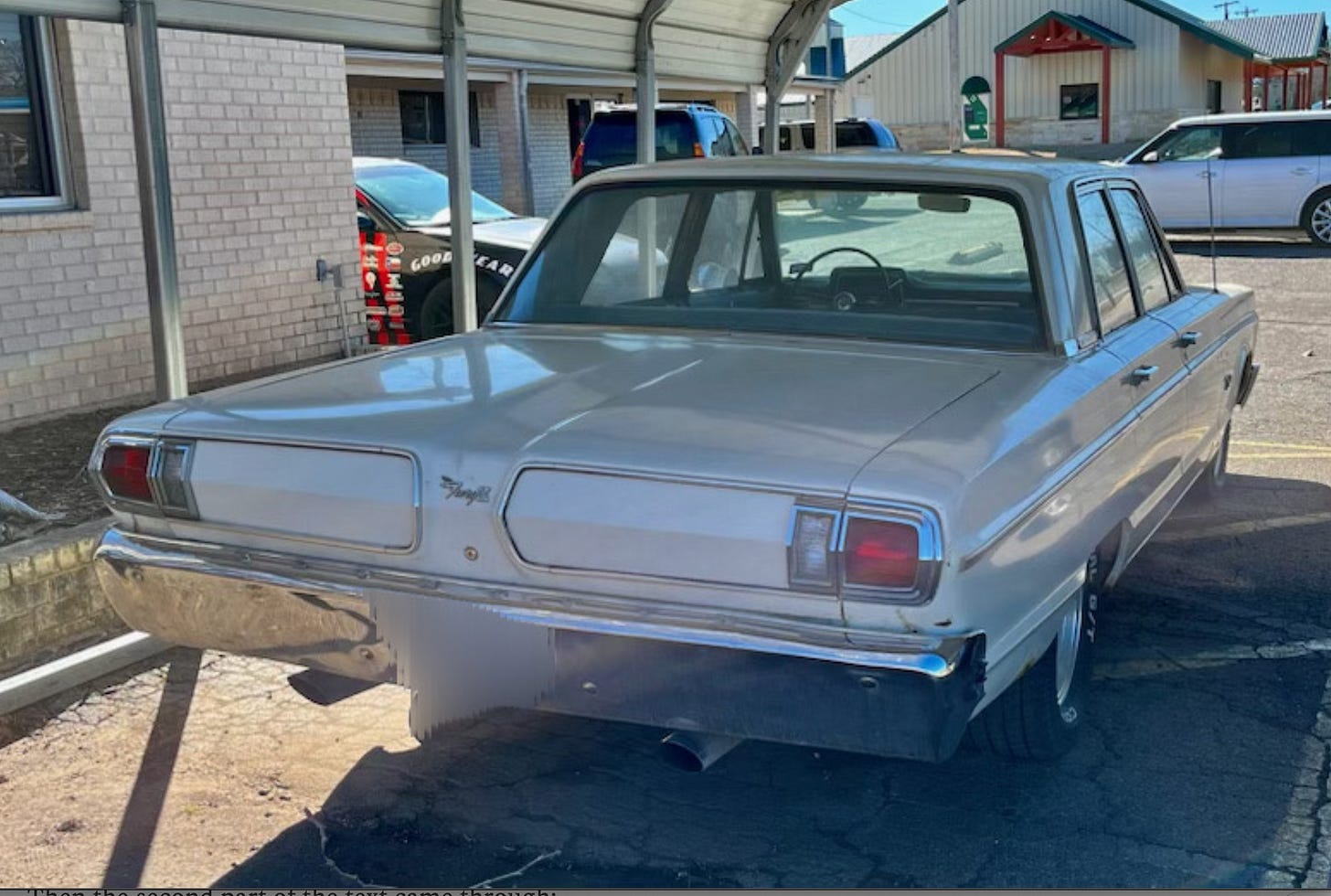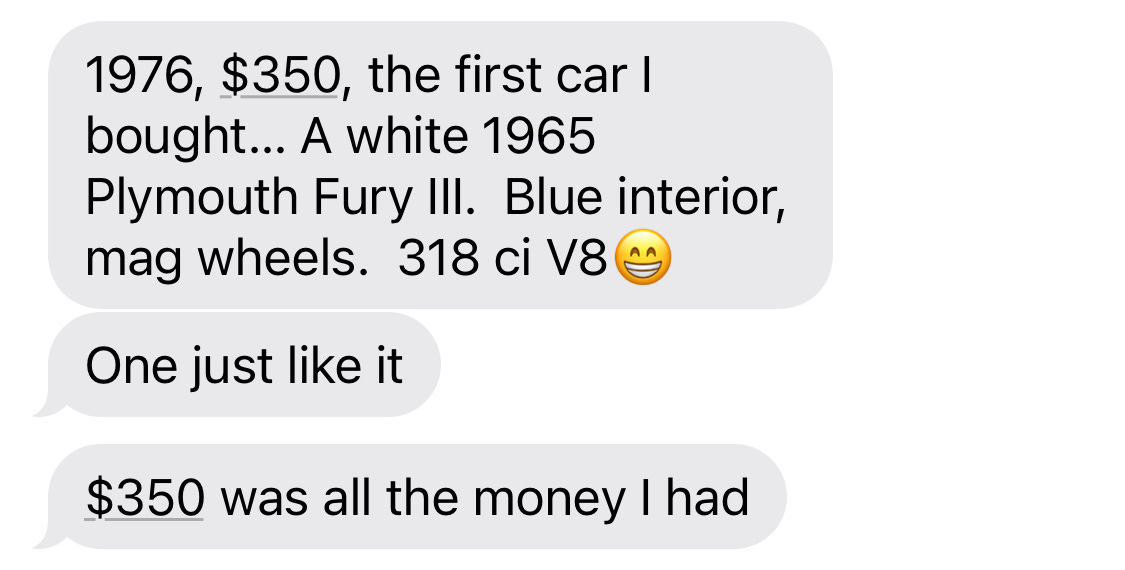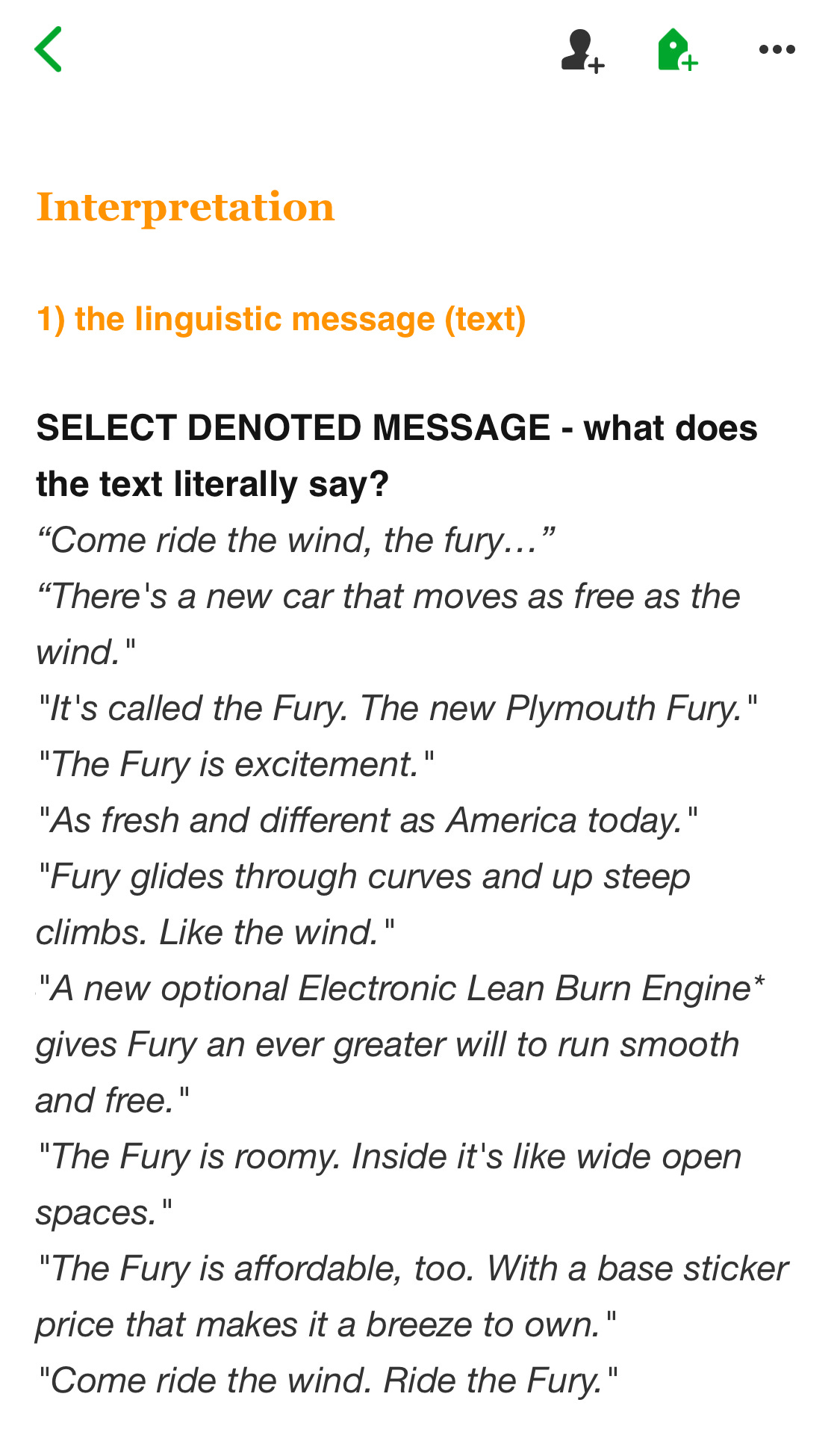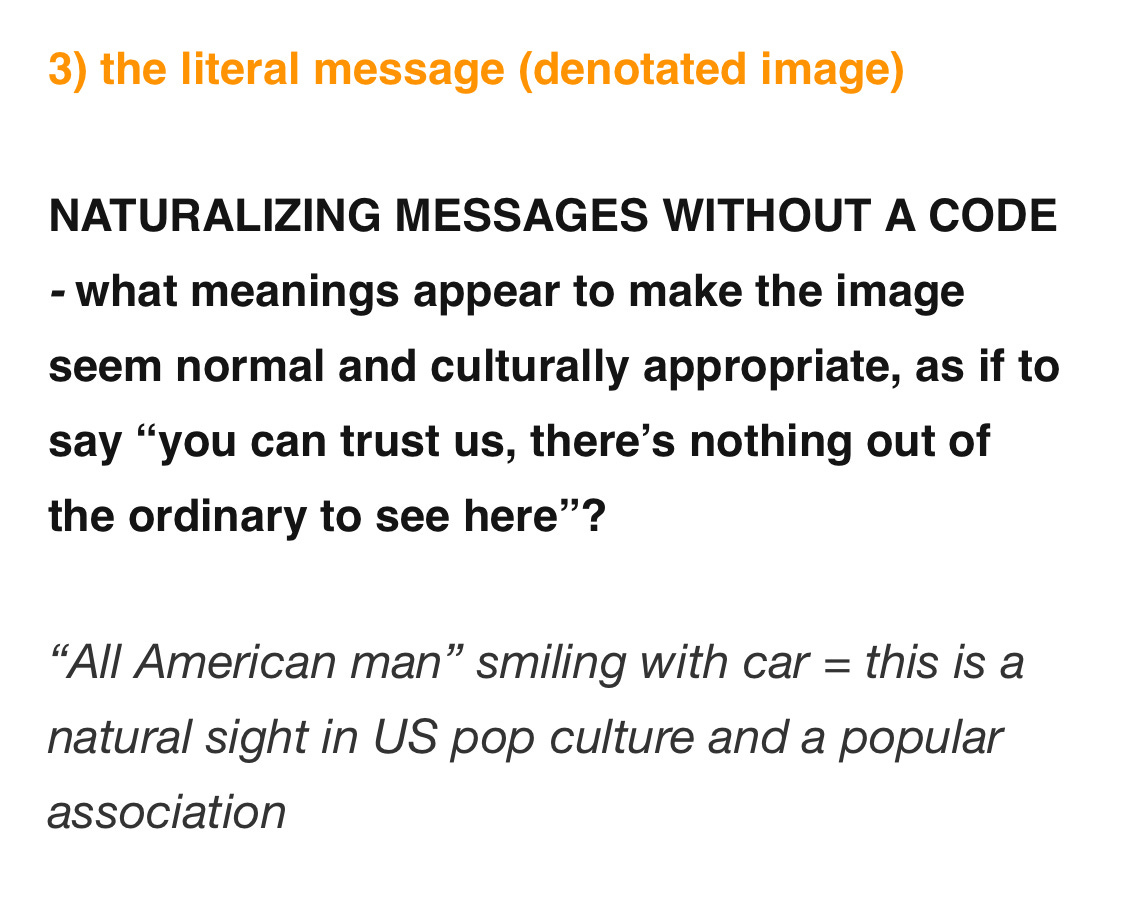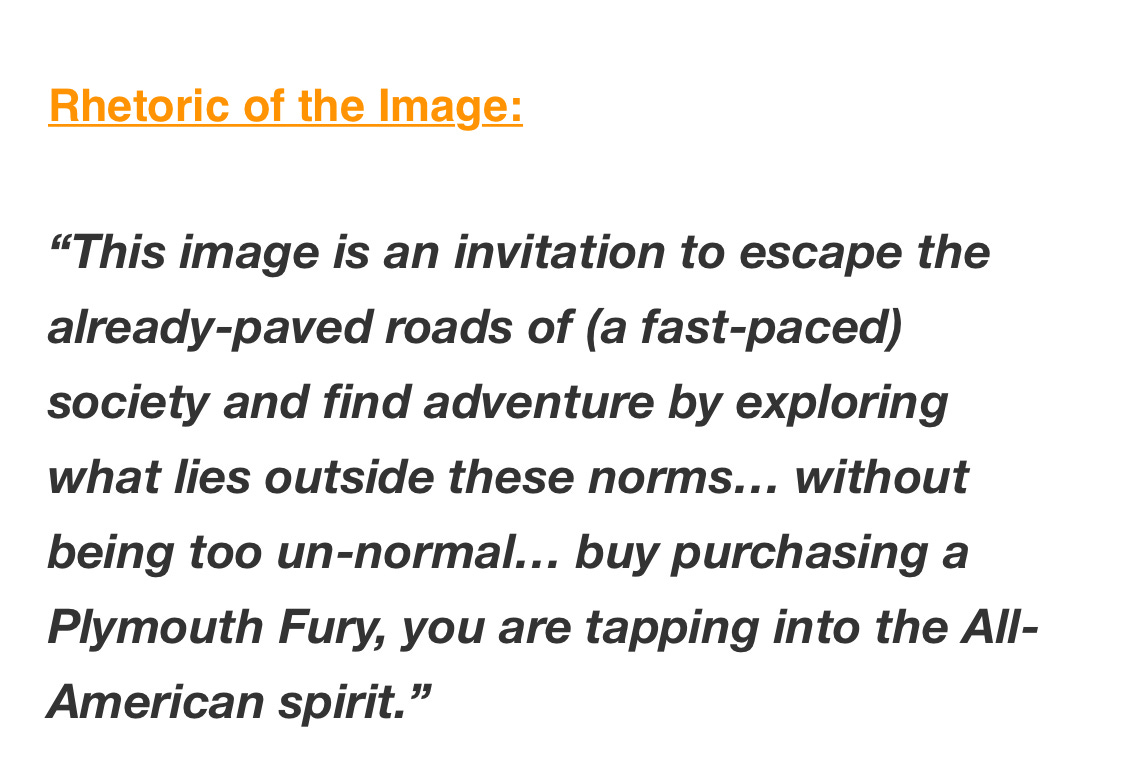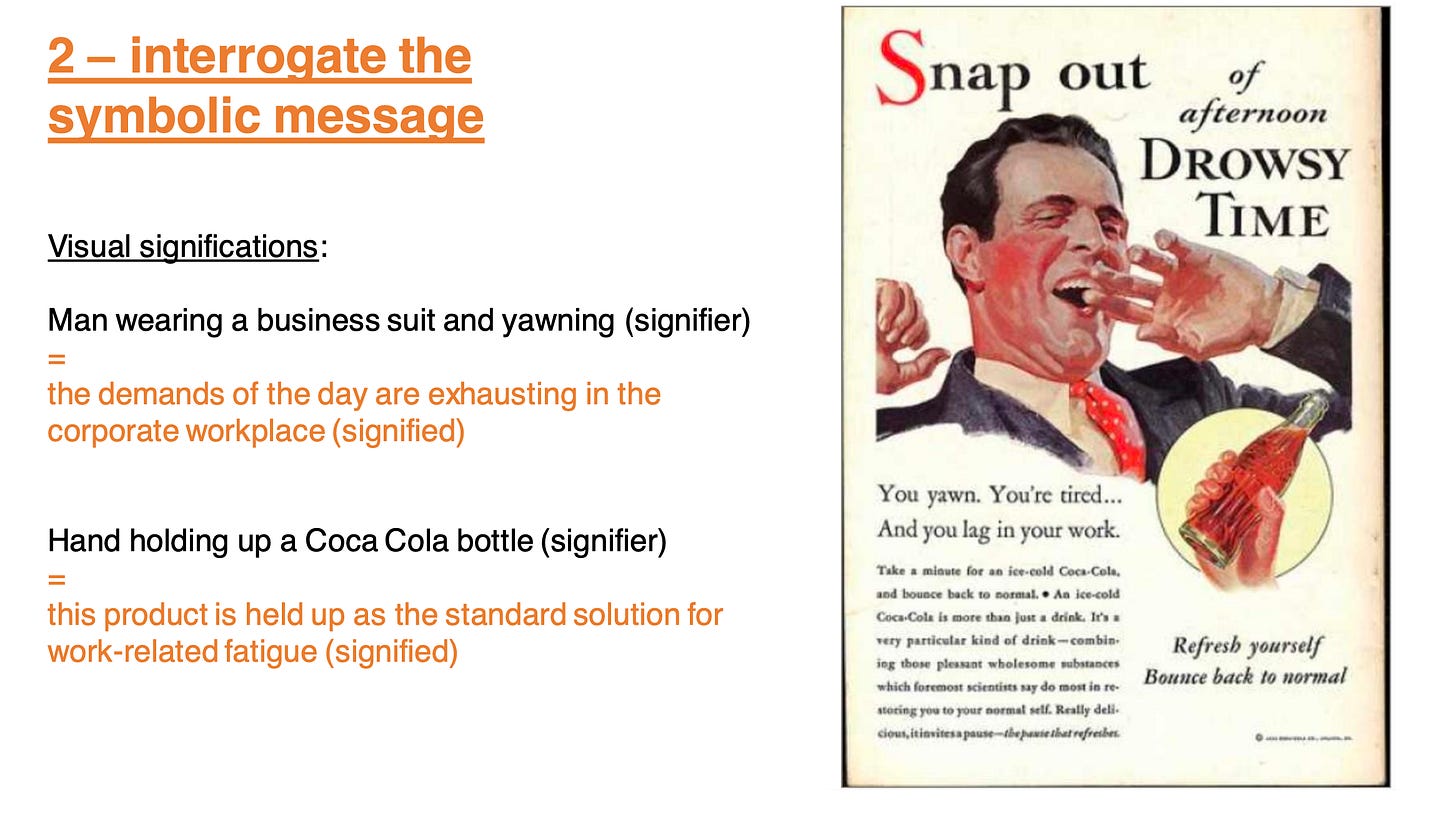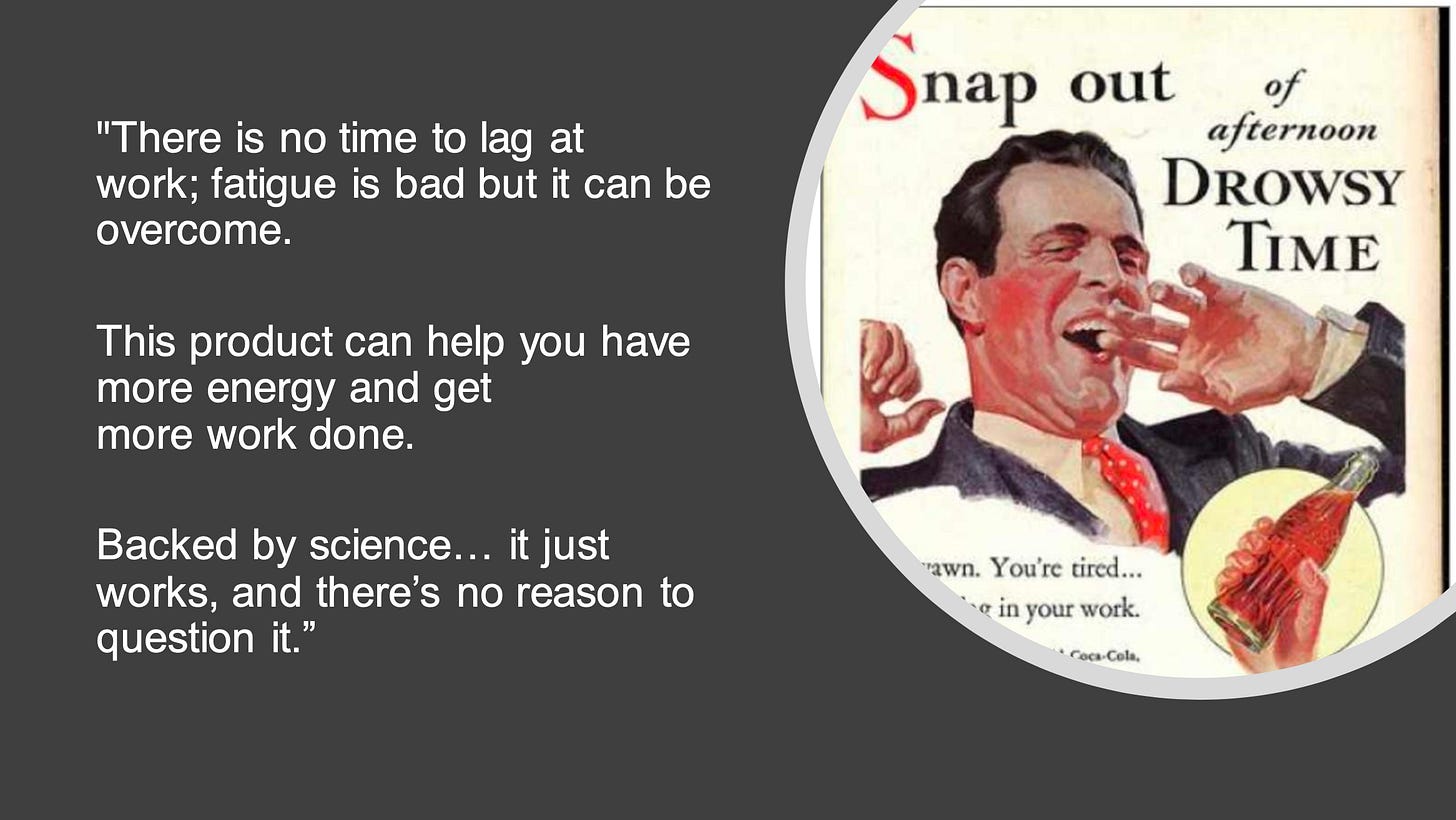Ride the wind, ride the fury: how to read advertising images for their hidden (and not so hidden) meanings
Or, How fast became normal: Part 5
Hi everyone! We are picking up from “how fast became normal” parts 1, 2, 3, and 4 and last week’s post on how “everything communicates” (an idea that we’ll revisit several times in this space, maybe as soon as this Thursday). It’s not at all necessary to read these but they do give fuller context for today’s post and the overall project.
This past weekend my dad texted me the following pictures:
At first, just the images came through without any context. I’m not a car aficionado, and neither is my dad, so I wasn’t quite sure what the significance here was.
Then the second part of the message appeared:
It’s funny how you constantly learn new things about your parents.
I chuckled, because I had heard of the Plymouth Fury, not because it had been my dad’s first car, but because it had come across in my research of how “time” had been depicted in US consumer culture throughout the 20th century.
The below image is burned into my brain:
I immediately opened my Evernote app to revisit the analysis I jotted down a couple years ago regarding this image and the symbolic meanings therein:
After all of that, I interpreted that the overall image “read” something like this:
It was a walk down memory lane revisiting this analysis, the two-hundred-and-fourth of its kind in my “visual archive of evidence”, in which nearly three hundred entries also followed.
I had spent hours* pouring over archives of old advertisements - visiting repositories like Duke Ad*Access, vintageadbrowser.com, and the UC Davis Marchand Archive. After I ensured I had a nice representation of diverse industries and decades and companies in my sample, I conducted an analysis much like what you see above for each advertisement collected.
*For those of you who read How Fast Became Normal, Part 4 you may remember the discussion of how we talk about ‘time’ in everyday language… I just can’t help myself from using phrases like “I spent hours”… it’s so normal!
The 3-step analysis (linguistic, symbolic, literal) derives from Roland Barthes’ essay ‘Rhetoric of the Image’ found in his 1978 book, Music Image Text. (I remember excitedly finding a used copy of the book on Amazon for $2 and taking it to a coffee shop the day it came in the mail, some time in the year 2018. As I poured over Barthes’ commentary on photography and visual transfiguration and advertising - written 40 years prior - I found myself realizing that the basics of visual analysis are *so* needed in today’s chaotic media environment.)
It turns out there’s a lot of different ways to conduct visual analysis. While determining the best methodology for my project, I talked to senior scholars in my field and read several books (this one by Rose was especially helpful) before ultimately settling on Barthes’ proposed method. As this method drew on semiotic principles, it allowed for a nice theoretical and methodological consistency in my dissertation. (Last week’s post discussed Barthes’ Mythologies as a way to think about the “time is money” cultural myth in the United States, so it made a lot of sense to continue drawing on his thinking for how to visually “interrogate” a cultural myth as it appeared in consumer culture.)
OH MY. So much academic mumbo jumbo. Let’s carry on.
At the conclusion of analyzing over 500 advertisements for their signified meanings of time and its place in a budding culture of mass consumerism, I compared the images, looking for salient themes among them. I discovered 20 unique iterations of the “time is money” cultural myth in 20th century US consumer culture.
As an aside: I went into my research already knowing that “time is money” exists as a key cultural story that individuals use to frame their understanding of the world around them (peep part 3 for a quick lit review). This project was more interested in:
clearly defining the role that marketing played in normalizing “time is money” during the dawn of the mass consumer era in the US, and
discovering all the ways in which “time is money” sneakily shows up in culture (according to Barthes, myths are slippery in their meanings; they always aim to transfigure and hide, meaning that the myth of “time is money” would rarely be as straightforward as literally saying “time is money”)
I won’t reveal all 20 iterations of “time is money” in this post, but will instead spend the next 20 weeks sharing what each of these themes are and why they matter, while also considering how we see these themes present in our everyday lives. I’ll be super interested to hear from readers on how these themes show up in your life!
But before all that, a tutorial of sorts.
We’ll be taking a closer look at this 1943 advertisement for Coca Cola:
Using Barthes’ process from ‘Rhetoric of the Image’…
Step 1: Interrogate the linguistic message (denotated and connotated text); consider relay/anchorage (the relationship between the image and text)
Step 2: Interrogate the symbolic message (connotated image) and identify key signs
Step 3: Identify the literal message (denotated image), i.e., naturalizing messages
We’ll walk through the process in the images below…
At this point in the analysis, we step back to consider:
What cultural values or beliefs does this image communicate and normalize?
In other words: what is the rhetoric of the image?
Here’s a sample response for this advertisement:
I think the important thing to remember in all of this is that repeated representations of the same idea naturalize, or normalize, that the idea is indeed truth.
Here: Time is scarce. Fatigue is bad. You have more work to do. Here, take this.
But… who benefits from these ideas, and how?
And perhaps the most important question to consider is… Do YOU benefit from all the ideas that are normalized around you on a daily basis?
—
For the next several weeks, Tuesday posts on Not a Consumer will focus on the 20 unique themes of “time is money”. I’m excited to share and dig into these further with all of you.
Thursday posts remain misc. topics on consumer culture/conscious consumerism.
Thanks again for being here!




